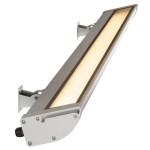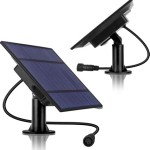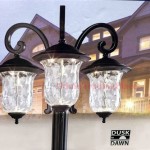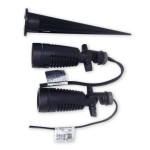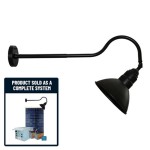How to Run Electricity to an Outdoor Shed
Adding electricity to an outdoor shed can significantly enhance its functionality and usefulness. Whether you intend to use it as a workshop, storage space, or a home office, having reliable power access can make your projects and tasks much easier. However, running electricity outdoors requires careful planning and adherence to safety regulations to ensure both functionality and safety.
This guide will walk you through the essential steps to safely and effectively run electricity to your outdoor shed. From planning the installation to choosing the right equipment and executing the wiring, this comprehensive guide will equip you with the knowledge needed to complete this project successfully.
1. Planning and Preparation
Before embarking on the electrical installation, thorough planning is crucial. This involves assessing the project's requirements, obtaining necessary permits, and gathering the appropriate materials.
A. Determine Electrical Needs
Start by determining the electrical load your shed will require. Consider the appliances and tools you intend to use, their power consumption, and the number of outlets needed. This assessment will help you determine the appropriate size of the circuit breaker and wiring.
B. Obtain Necessary Permits
In most jurisdictions, electrical work requires permits. Consult your local building department or electrical inspector to understand the specific regulations and obtain the necessary permits. This step ensures safety and compliance with building codes.
C. Gather Materials
Once you have a clear understanding of your electrical needs, gather the essential materials for the installation. These typically include:
- Wire: Choose a suitable gauge wire based on the amperage requirements. Copper wire is generally preferred for its conductivity.
- Circuit breaker: The size of the circuit breaker should match the amperage of the chosen wire.
- Outlet boxes: Select weatherproof outlet boxes for outdoor use, ensuring they are properly grounded.
- Outlets: Choose weatherproof outlets rated for outdoor use.
- Conduit: Protect the wiring by running it through conduit, which can be metal or PVC. Conduit provides mechanical protection and helps prevent damage.
- Ground rod: Install a ground rod for safety and to ensure proper grounding of the electrical system.
- Tools: Ensure you have the necessary tools for installing the wiring and outlets, including wire strippers, wire cutters, a voltage tester, and a drill.
2. Running the Electrical Wire
Once you have the necessary materials and permits, you can begin running the electrical wire to your shed. This step requires careful attention to safety procedures and proper installation practices.
A. Dig the Trench
Dig a trench from your home's electrical panel to the shed. The depth of the trench should be at least 18 inches deep to protect the wiring from damage and freezing temperatures. The trench should also be wide enough to comfortably accommodate the conduit and wiring.
B. Install the Conduit
Lay the conduit in the trench and secure it with conduit clamps. Ensure the conduit is properly supported and not subjected to stress or movement.
C. Run the Wiring
Pull the electrical wire through the conduit. Be sure to leave enough slack for easier connections later. You can use a fish tape or a wire pulling tool to guide the wire through the conduit.
3. Connecting the Wiring and Installation
After running the wire to your shed, you need to connect the wiring to the electrical panel and install the outlets in the shed.
A. Connect to the Electrical Panel
Connect the wire to the circuit breaker in your electrical panel. Ensure you connect the wire to the correct terminal of the breaker, typically denoted by "line" or "hot." Follow the manufacturer's instructions for proper installation.
B. Install Outlet Boxes and Outlets
Install the outlet boxes in the shed according to the manufacturer's instructions. Secure the boxes to the wall or studs, ensuring they are level and properly supported. Connect the wiring to the outlet boxes, making sure to follow the correct wire colors (black for hot, white for neutral, and green for ground). Then, install the weatherproof outlets in the boxes, ensuring they are properly grounded.
C. Install a Ground Rod
Install a ground rod near the shed to complete the electrical system's grounding. Drive the ground rod into the ground to a depth specified by local codes. Connect the grounding wire from the electrical panel to the ground rod, ensuring a secure connection.
By carefully following these steps and adhering to safety regulations, you can successfully run electricity to your outdoor shed. Remember to consult local building codes and permits to ensure a safe and compliant installation.

How To Get Electricity Into Your Garden Building

Running Power To A Garden Shed

How To Run Electrical Wiring Outside Family Handyman

Running Electricity To Your She Shed Ideas For Saving Money Diy Danielle

How To Run Electrical Wiring Outside Family Handyman

How To Run Electricity A Shed

10 Tips For Powering Your Shed Or Garden Meteor Electrical Electical

Can I Use An Extension Cord To Power My Shed

Electrical Wiring How To Run Power Anywhere Home Repair

Wiring An Outdoor Shed Adding Halfway Doityourself Com Community Forums
Related Posts
